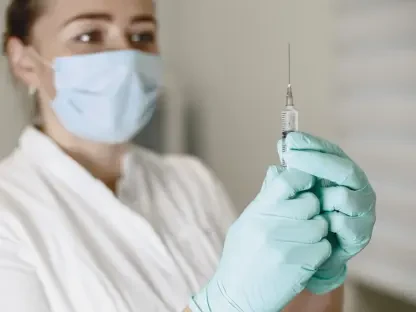The Rising Importance of Women’s Health in Healthcare Investments
The women’s health sector has emerged as a cornerstone of healthcare investments, commanding attention with its specialized focus and remarkable resilience amid economic fluctuations. This segment, often overshadowed by broader healthcare categories, encompasses critical areas such as diagnostics, breast health solutions, surgical technologies, and preventive care. With a global market already valued at billions, the sector stands out as a stable haven for investors seeking consistent returns in an otherwise volatile landscape.
Demographic shifts are fueling this surge, as aging populations and a rising incidence of breast cancer—estimated at over 2.3 million new cases annually worldwide—drive demand for innovative medical solutions. These trends underscore the urgent need for advanced screening and treatment options, positioning women’s health as a priority for both public health initiatives and private capital. Major players like Hologic have capitalized on this momentum, becoming leaders in technologies that address these pressing needs.
Technological advancements further amplify the sector’s appeal, with breakthroughs like 3D mammography and AI-driven diagnostics enhancing early detection rates by significant margins. Coupled with a relatively stable regulatory environment that supports predictable approval timelines, these innovations make women’s health an attractive proposition for private equity firms like Blackstone and TPG. Their involvement signals a broader industry shift toward specialized, high-growth niches within healthcare.
Unpacking the Blackstone-TPG Acquisition of Hologic
Key Drivers and Strategic Motivations
The $18.3 billion acquisition of Hologic by Blackstone and TPG represents a calculated move to secure a foothold in a defensive asset class with enduring demand. Women’s health, with its focus on essential services like cancer screening and preventive care, offers stability that transcends economic cycles. This deal reflects a belief in the sector’s ability to deliver consistent revenue streams, even in uncertain times.
Beyond stability, the promise of emerging technologies such as AI integration and digital diagnostics plays a pivotal role in this investment. These tools are revolutionizing how conditions like breast cancer are detected and managed, offering improved accuracy and efficiency. For investors, such innovations translate into substantial growth potential, as adoption rates climb across both developed and emerging markets.
Additionally, evolving consumer behavior—particularly a growing emphasis on preventive care among women—creates fertile ground for expansion. Opportunities in regions like China and India, where healthcare infrastructure is rapidly developing, add another layer of strategic allure. This acquisition is not just about current market strength but also about positioning for future global demand.
Financial Structure and Market Performance
Delving into the financial architecture of the deal, Hologic shareholders are set to receive $76 per share in cash, alongside contingent value rights of up to $3 per share, reflecting a 12% premium over the pre-announcement market price. This structure, underpinned by an estimated equity contribution of $11-12 billion split between Blackstone and TPG, highlights the scale and confidence behind the transaction. Leverage ratios, projected at 4-5x EBITDA, further illustrate the sophisticated financial engineering at play.
Market data paints an equally compelling picture, with the women’s health sector expected to grow from its current valuation to $57.5 billion by 2030, driven by a compound annual growth rate of 5.8%. Hologic itself stands to benefit, with breast health solutions accounting for approximately 40% of its revenue. This dominant segment, bolstered by recurring income from diagnostic equipment, positions the company for sustained financial performance under new ownership.
Looking ahead, the partnership aims to capitalize on Hologic’s established market presence to unlock additional value. The focus will likely center on scaling operations and enhancing product offerings, ensuring that revenue growth aligns with broader industry projections. This financial blueprint serves as a testament to the meticulous planning behind such a monumental investment.
Challenges in the Women’s Health Investment Landscape
Navigating the women’s health sector is not without its hurdles, as competitive pressures mount from industry consolidation and alternative diagnostic providers. Larger players often acquire smaller innovators, creating a crowded field where differentiation becomes critical. For Blackstone and TPG, maintaining Hologic’s edge will require strategic agility in a rapidly evolving market.
Technological integration poses another significant challenge, particularly in scaling AI and digital tools while keeping costs manageable. Although these advancements promise enhanced outcomes, their implementation demands substantial investment and expertise. Balancing innovation with affordability remains a key concern for stakeholders aiming to broaden access to cutting-edge solutions.
Market penetration in emerging economies also presents obstacles, as infrastructure limitations hinder widespread adoption of advanced medical technologies. Addressing these gaps may involve forging strategic partnerships with local entities or investing in tailored distribution networks. Overcoming such barriers will be essential to unlocking the full potential of high-growth regions and ensuring long-term success.
Regulatory Environment Shaping Women’s Health Investments
The regulatory landscape for women’s health investments offers a blend of predictability and complexity, with agencies like the FDA providing structured approval timelines for new technologies. This clarity fosters investor confidence, as it reduces uncertainty around product launches and market entry. However, compliance with stringent standards remains a critical factor in strategic planning.
Significant legislation, such as the Hart-Scott-Rodino Act, governs major transactions like the Hologic acquisition, influencing timelines for deal closures. With completion anticipated in the near term, navigating these legal frameworks demands meticulous attention to detail. Delays or unforeseen regulatory hurdles could impact the pace of integration and value realization.
Data privacy and security standards also play a pivotal role, especially as diagnostic technologies increasingly rely on digital platforms. Ensuring compliance with patient care regulations while adopting innovative tools is a delicate balance. This environment, while supportive of investment, requires firms to prioritize robust governance to mitigate risks during post-acquisition transitions.
Future Outlook for Women’s Health and Private Equity
Emerging trends in women’s health point to a transformative period ahead, with AI-driven diagnostics poised to improve early cancer detection rates by 5-10%. Such advancements are reshaping clinical practices, enabling more precise interventions and better patient outcomes. For private equity, these developments signal untapped opportunities to drive portfolio growth through technology adoption.
Market disruptors, including new entrants and competitive responses to large-scale mergers and acquisitions, are likely to intensify rivalry within the sector. Established firms may face pressure to innovate rapidly, while smaller players could challenge the status quo with niche solutions. This dynamic landscape will test the adaptability of major investors like Blackstone and TPG.
Geographic expansion remains a key growth avenue, particularly in markets like China, where breast imaging demand is growing at a 12% compound annual growth rate. Coupled with operational margin improvements of 200-400 basis points, these strategies could redefine profitability benchmarks. Rising U.S. healthcare spending, projected to reach $6.8 trillion by 2030, further bolsters the sector’s long-term prospects amid global economic shifts.
Strategic Value and Investment Prospects
Reflecting on the monumental $18.3 billion deal, the acquisition of Hologic by Blackstone and TPG marks a defining moment in healthcare mergers and acquisitions, underscoring profound confidence in women’s health technology. Their combined expertise and Hologic’s robust portfolio set a strong foundation for value creation, establishing a precedent for future transactions in specialized medical fields.
Moving forward, investors should prioritize targeted allocations in healthcare segments demonstrating stable demand and scalable innovation, such as women’s health diagnostics. Exploring partnerships with technology providers to accelerate AI integration could offer a competitive edge. Additionally, focusing on operational efficiencies will be crucial to maximizing returns in a challenging yet promising market.
As the industry evolves, stakeholders must remain vigilant in addressing regulatory complexities and competitive dynamics to sustain momentum. By leveraging geographic opportunities and embracing digital transformation, firms can position themselves at the forefront of this vital sector. The path ahead, while intricate, holds immense potential for those committed to strategic foresight and adaptability.









